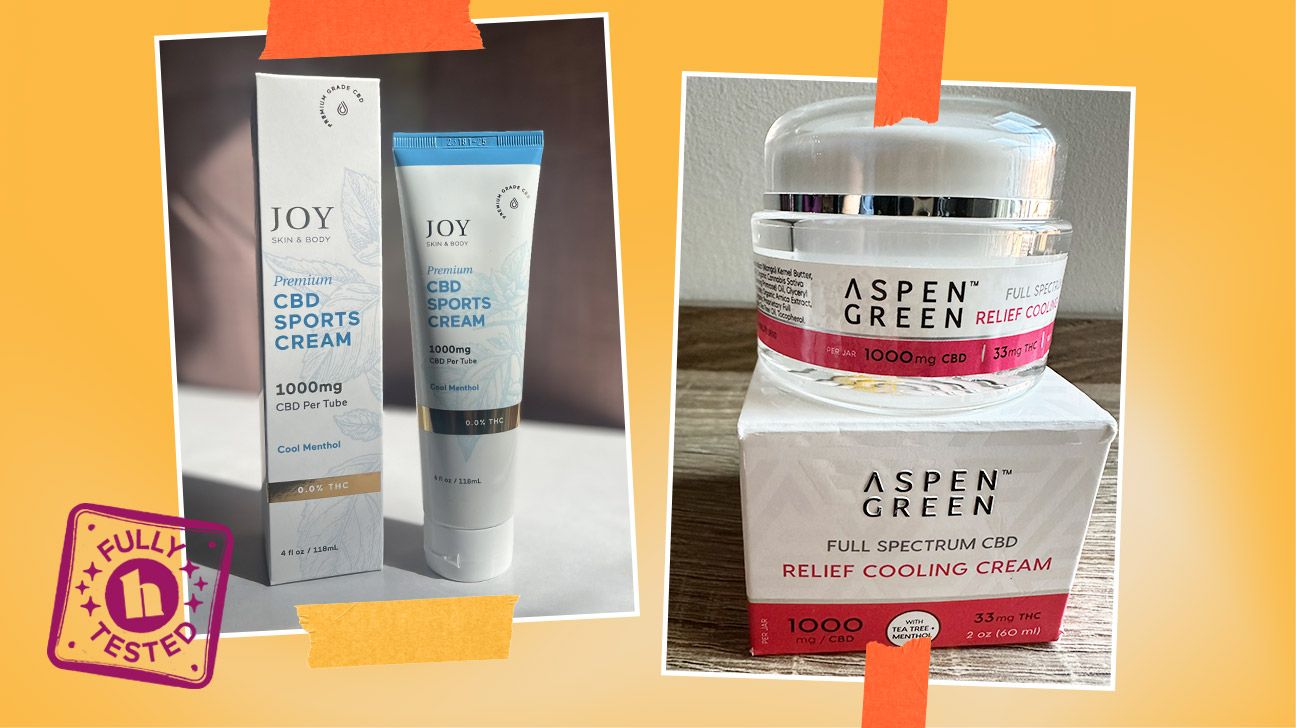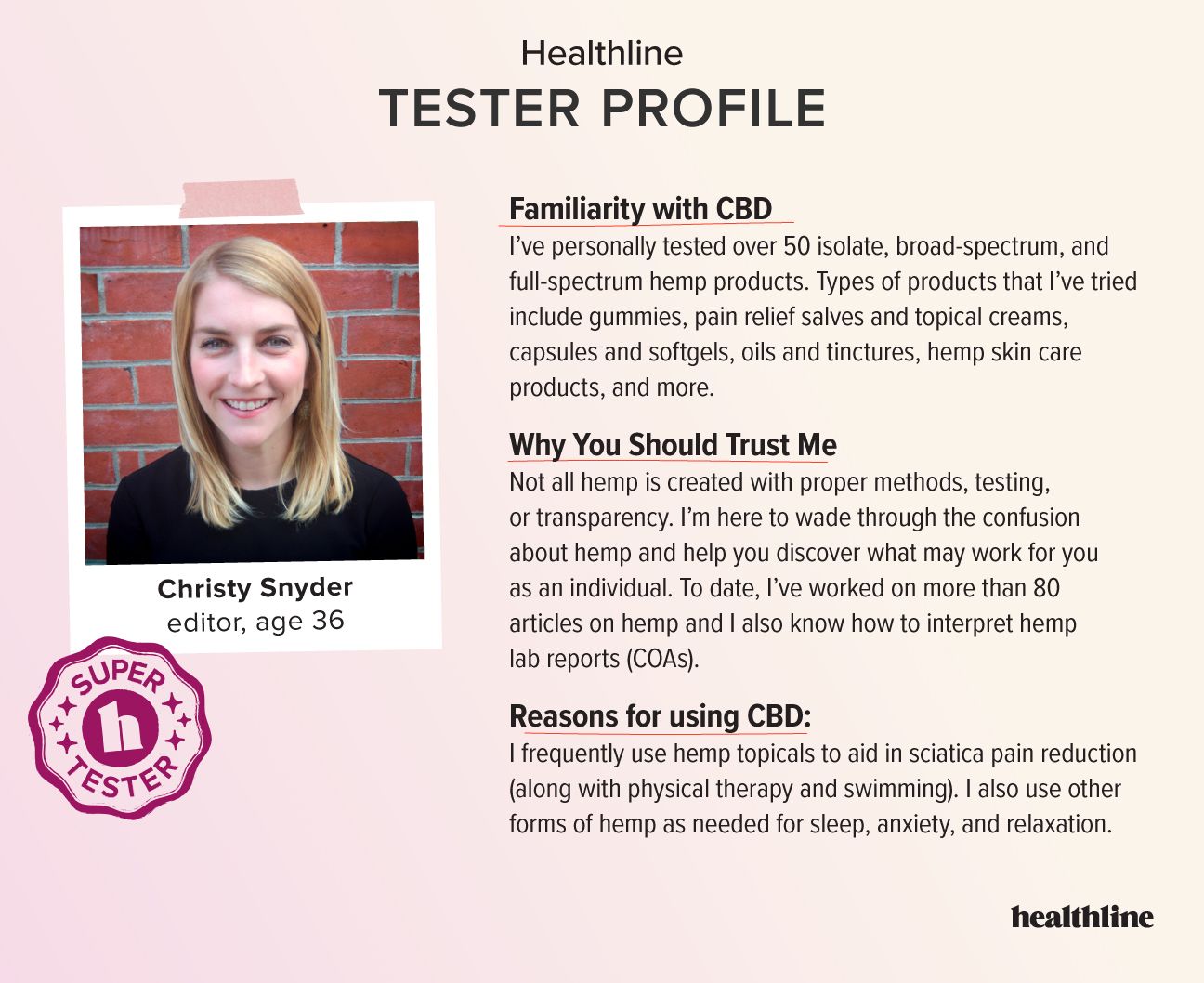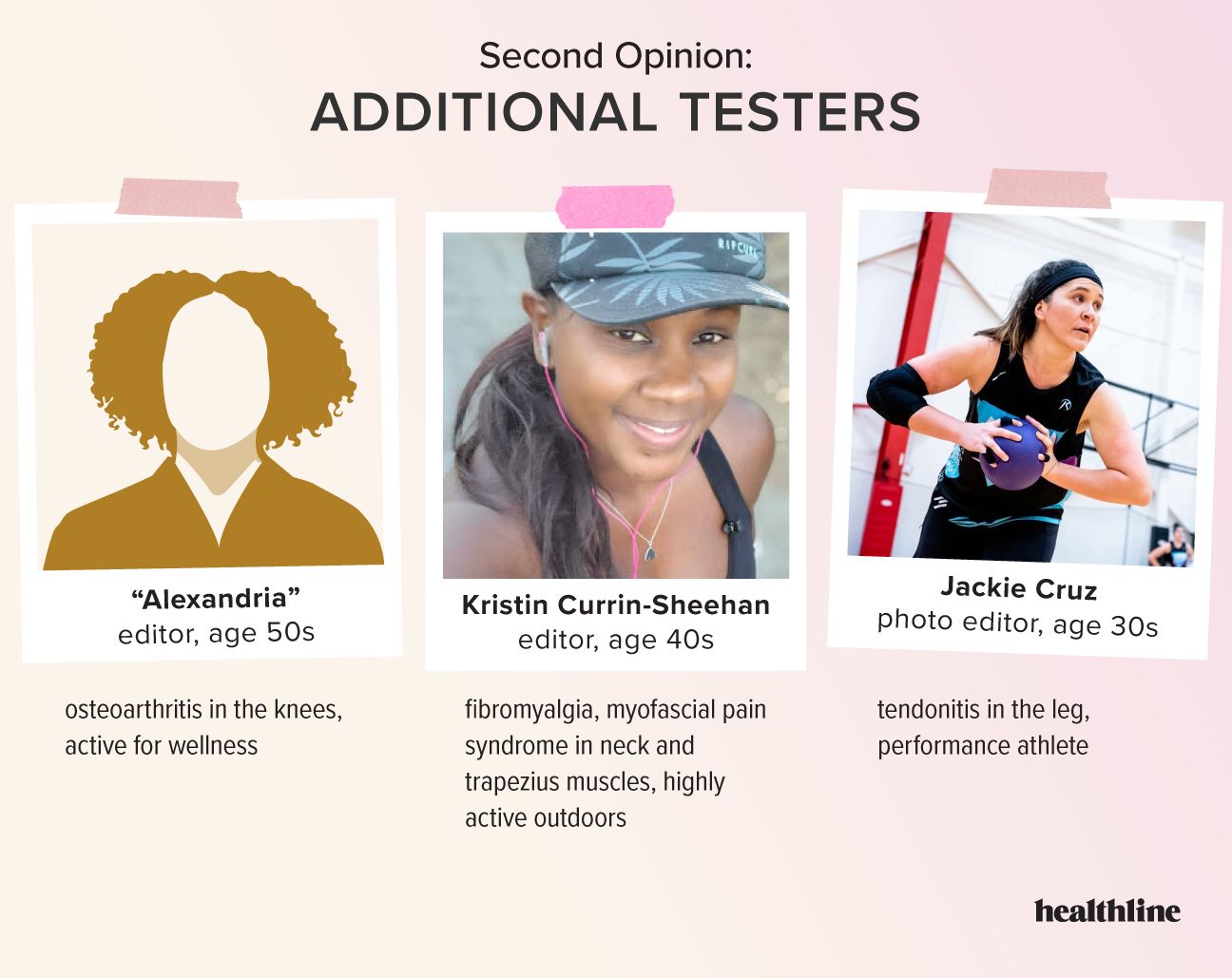We include products we think are useful for our readers. If you buy through links on this page, we may earn a small commission. Here’s our process.
Healthline only shows you brands and products that we stand behind.
Our team thoroughly researches and evaluates the recommendations we make on our site. To establish that the product manufacturers addressed safety and efficacy standards, we:- Evaluate ingredients and composition: Do they have the potential to cause harm?
- Fact-check all health claims: Do they align with the current body of scientific evidence?
- Assess the brand: Does it operate with integrity and adhere to industry best practices?
We’ve tested a range of CBD topicals and chose these 6 as the best CBD creams for pain. See what products made the cut.
If you’re looking for a cannabidiol (CBD) product to soothe your aches and pains, a topical CBD — such as a CBD cream — may be particularly useful.
But how can you tell which CBD creams are the real deal?
Read on for our experiences testing all the creams hands-on. I — and several bonus testers — provide honest feedback on what worked for us and what didn’t!
I was diagnosed with sciatica in January 2022 and went to physical therapy until I was deemed OK to return to the gym. After I was feeling better, I switched my workout style from lifting (think heavy kettlebells, pushing a sled, and more) to swimming laps (my one true fitness love), yoga, and walking.
I still have sciatica flare-ups from time to time, and pain relief CBD creams have been lifesaving when my physical therapy exercises aren’t quite doing the trick. CBD cream is nice to have when my pain is unpredictable. All the creams I tried are easy to transport and pack in a backpack, gym bag, or suitcase.
Just knowing that I have my trusty CBD cream in my bag helps me push myself on hikes, bike rides, and long walks.
For those who want a second opinion
*Some names have been changed at the request of testers.
Several more recent testers tried these creams and weighed in on their feedback. Here’s who we are and how we came to use CBD creams for pain:
We selected these CBD creams based on criteria we think are good indicators of safety, quality, and transparency.
As a part of our vetting process, we consider:
- the product’s composition, ingredients, and overall quality
- any third-party certifications
- the company’s reputation and business practices
- any lab test results
- marketing claims
Read more about how we vet products and brands.
Additionally, we tested as many vetted brands as we could according to targeted criteria.
Although many people use it as a natural pain management tool, there’s not enough research that looks at whether CBD offers effective pain relief. However, so far, there’s some evidence that topical CBD products, like creams, may help with a variety of pain sensations, including:
- Arthritis-related pain: A
2016 animal study in rats found that topical CBD may help with arthritis-related pain and swelling. More recently, an anonymous, questionnaire-based2022 study suggests that CBD use is linked with a perceived decrease in arthritis symptoms, especially joint pain. Additionally, a2023 study in mice suggests that cannabinoids like CBD and cannabichromene may help reduce inflammation, a common arthritis symptom. - Nerve pain: A small 2020 study looked at the effects of topical CBD oils on pain. Many people in the study, all with nerve damage, reported having reduced pain levels. They described feeling a dip in sharp, intense, and cold and itchy pain sensations.
- Jaw pain: A
small 2019 study looked into how topical CBD may provide relief from a specific kind of facial pain that mainly affects the jaw. The study found that people who applied topical CBD about two times per day experienced a lot less pain after 2 weeks.
Another 2020 study found that some people in palliative care use THC or CBD regularly and that topical products, in particular, help reduce pain.
Here at Healthline, our consumer insights team asked readers about their use of CBD products for wellness in the last year:
Pros
- Helpful for targeting pain in specific areas: While edibles provide full-body effects, you can apply topicals like creams directly to trouble areas.
- Works quickly: Because topicals don’t pass through your stomach, they don’t get broken down like edibles. This means they tend to work faster than gummies or capsules.
Cons
- Less potent than ingestibles: You may feel the effects of topicals sooner than ingestibles, but most creams and lotions tend to be less potent.
- Difficult to dose: Oils and ingestibles such as gummies or capsules are carefully formulated to ensure you’re getting a specific dose with each dropper or serving. However, when applying creams, it can be difficult to figure out exact dosing.
- May not be (entirely) effective: CBD cream may not be effective for some pain conditions because it is not absorbed into the bloodstream
A
Most topicals are for external use only, so you should not ingest them unless the packaging says it’s safe to do so.
If you have any sores or open wounds, wait to apply CBD cream. Many products should not be used on broken skin or with other beauty or grooming products on the area.
While small amounts of low dose CBD products shouldn’t make you feel “high,” some people occasionally experience side effects like:
- sleepiness
- diarrhea
- changes in weight or appetite
However, topicals are generally unlikely to absorb into your bloodstream and cause full-body effects.
Absorption into a target area, called bioavailability in medicine, is dependent on factors like:
- skin hydration
- skin health
- the thickness or thinness of the skin
- whether the area has more fat, muscle, or bone
Since there is little research on topical CBDs and bioavailability, it’s not certain how safe it is to apply CBD creams or oils with other topical agents.
Sometimes, one topical agent can cause increased or decreased absorption of the other depending on the formulation of each product and the order applied. Additionally, the active or inactive ingredients in products may cause a
A
You can speak with a doctor or healthcare professional before using CBD since it can interact with certain medications.
Research is still ongoing, but some smaller studies and animal research suggest that CBD may reduce inflammation and help provide pain relief. Studies have specifically looked at CBD for arthritis, nerve, and jaw pain.
Some possible side effects of CBD are:
- sleepiness
- diarrhea
- appetite changes
- weight changes
Whenever you’re using a product that’s new to you, it’s important to check ingredients carefully to avoid any known allergens.
Never apply CBD to broken skin, and remember to perform a patch test before using it for the first time. This can determine if any ingredients in the topical will irritate your skin.
It depends on the person, but CBD pain relief cream starts kicking in within 15 to 30 minutes.
If you’re using a pain cream that contains an ingredient like menthol, you might feel a tingling sensation within a few seconds.
Yes. CBD oils meant to be taken orally can also be rubbed into the skin. Just make sure to read the ingredient list for any irritants before you apply oils directly to the skin.
Keep in mind that you can apply some CBD oils to the skin, but do not ingest CBD topicals, as they’re meant specifically for the skin.
Compared with topicals, ingestibles take longer to kick in, but they last longer. Topical CBD might be a better choice if you’re looking for pain relief within the next 15 to 30 minutes.
Ingestibles can also affect the whole body, while CBD balms and creams only affect the areas you apply them to.
The side effects may also differ from one delivery system to the next.
The best CBD product is ultimately one that works for you, so don’t be afraid to experiment with different methods.
The jury is still out on whether CBD topicals offer definitive pain relief, but many people report having success with CBD balms, creams, lotions, and salves for all kinds of ailments.
For the best results possible, you can pick a potent, full-spectrum CBD cream from a reputable company that sources quality, organic ingredients.
Remember that the most reputable CBD brands are transparent about their products, including clear descriptions on their websites about where products are grown and how they’re processed. Talk with a doctor or healthcare professional before trying CBD.
Is CBD legal? The 2018 Farm Bill removed hemp from the legal definition of marijuana in the Controlled Substances Act. This made some hemp-derived CBD products with less than 0.3% THC legal at the federal level. However, CBD products containing more than 0.3% THC still fall under the legal definition of marijuana, making them illegal at the federal level. Some states have legalized CBD, so be sure to check state laws, especially when traveling. Also, keep in mind that the FDA has not approved nonprescription CBD products, and some products may be inaccurately labeled.
Healthline has sole editorial control over this article. Potential uses for the products listed here are not health claims made by the manufacturers. The information in this article is intended to be general in nature. It’s not intended to be a substitute for medical advice from a healthcare professional. Healthline encourages you to make any treatment decisions with your healthcare professional.
“”””””””



